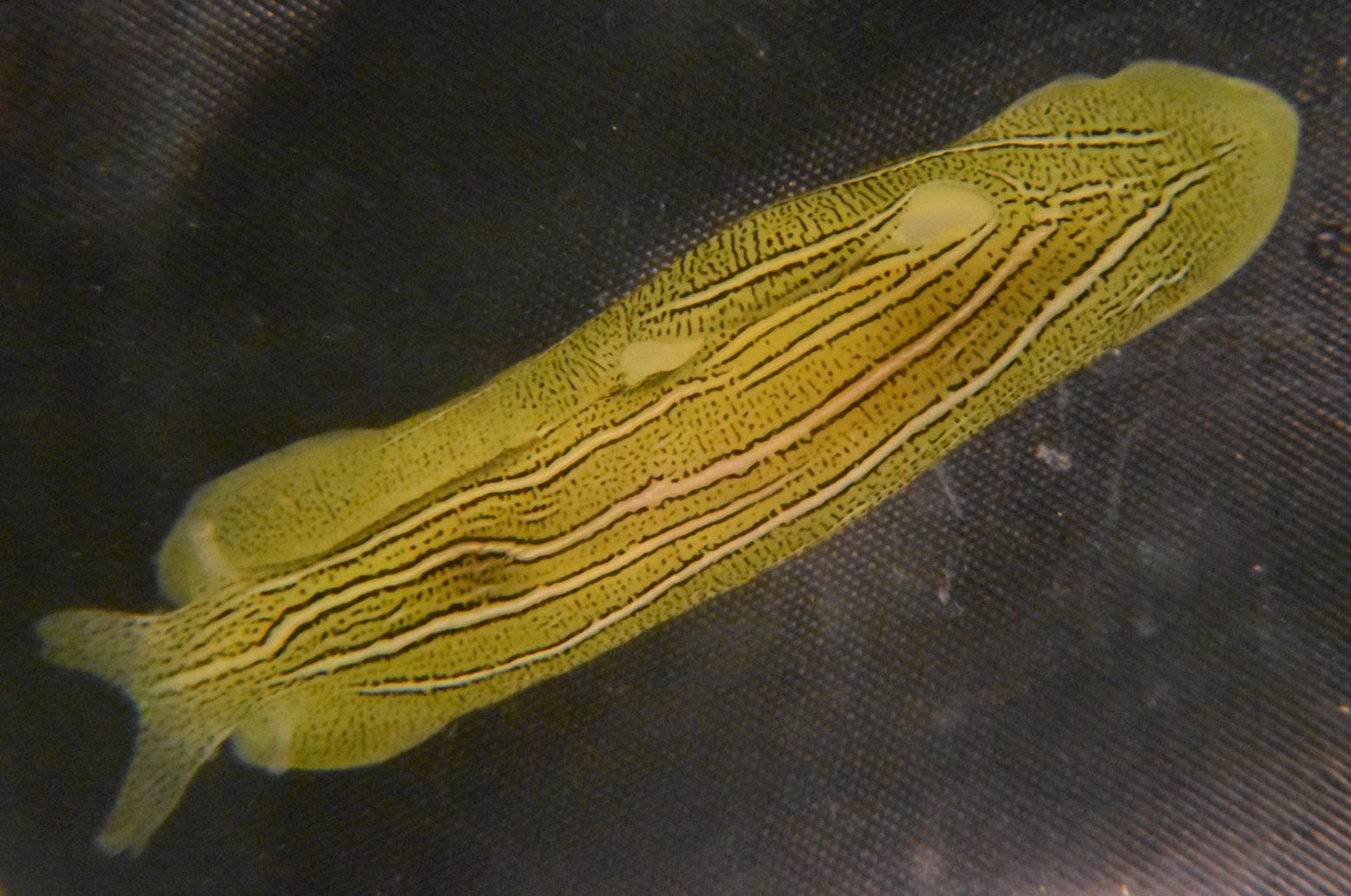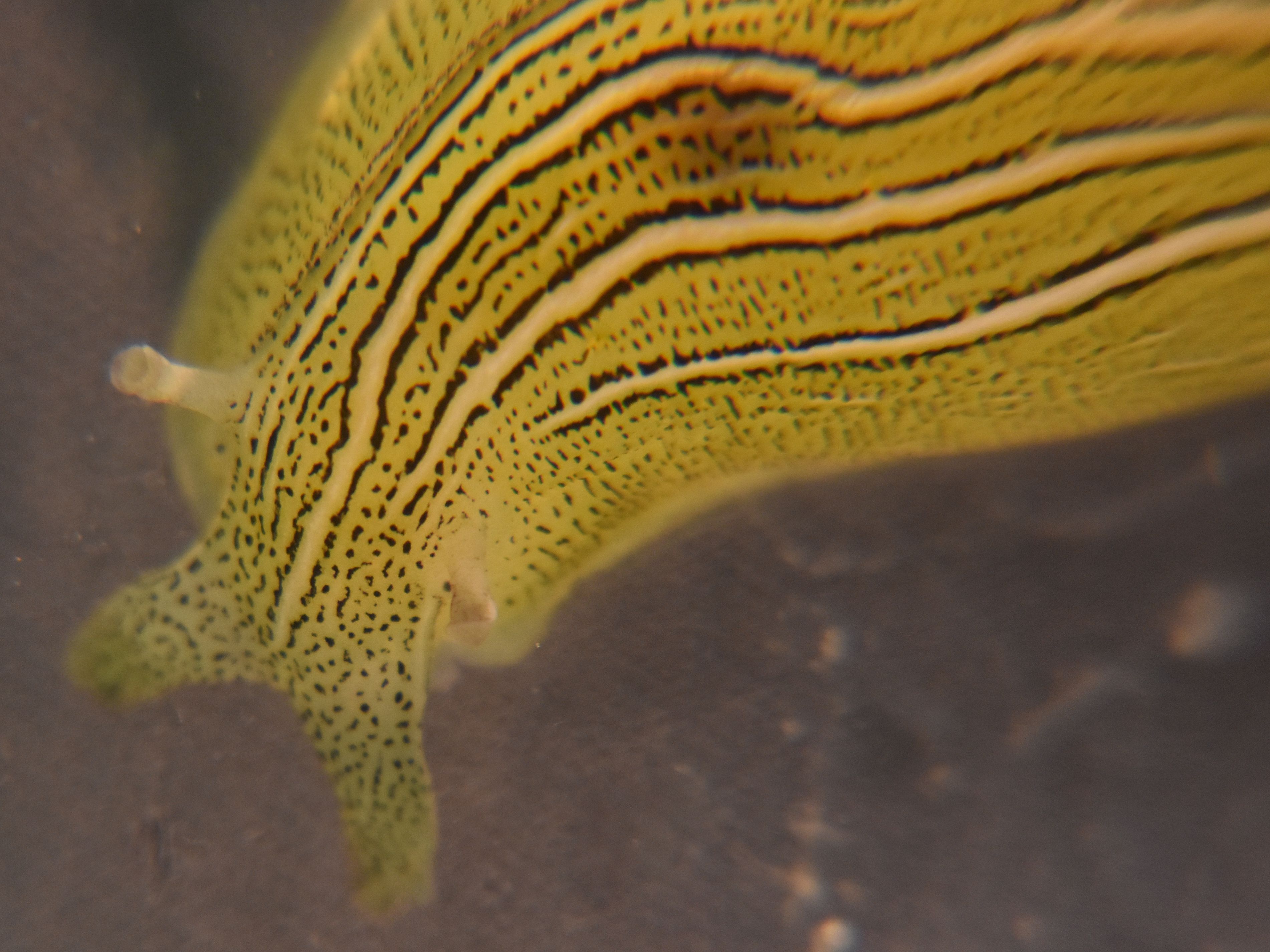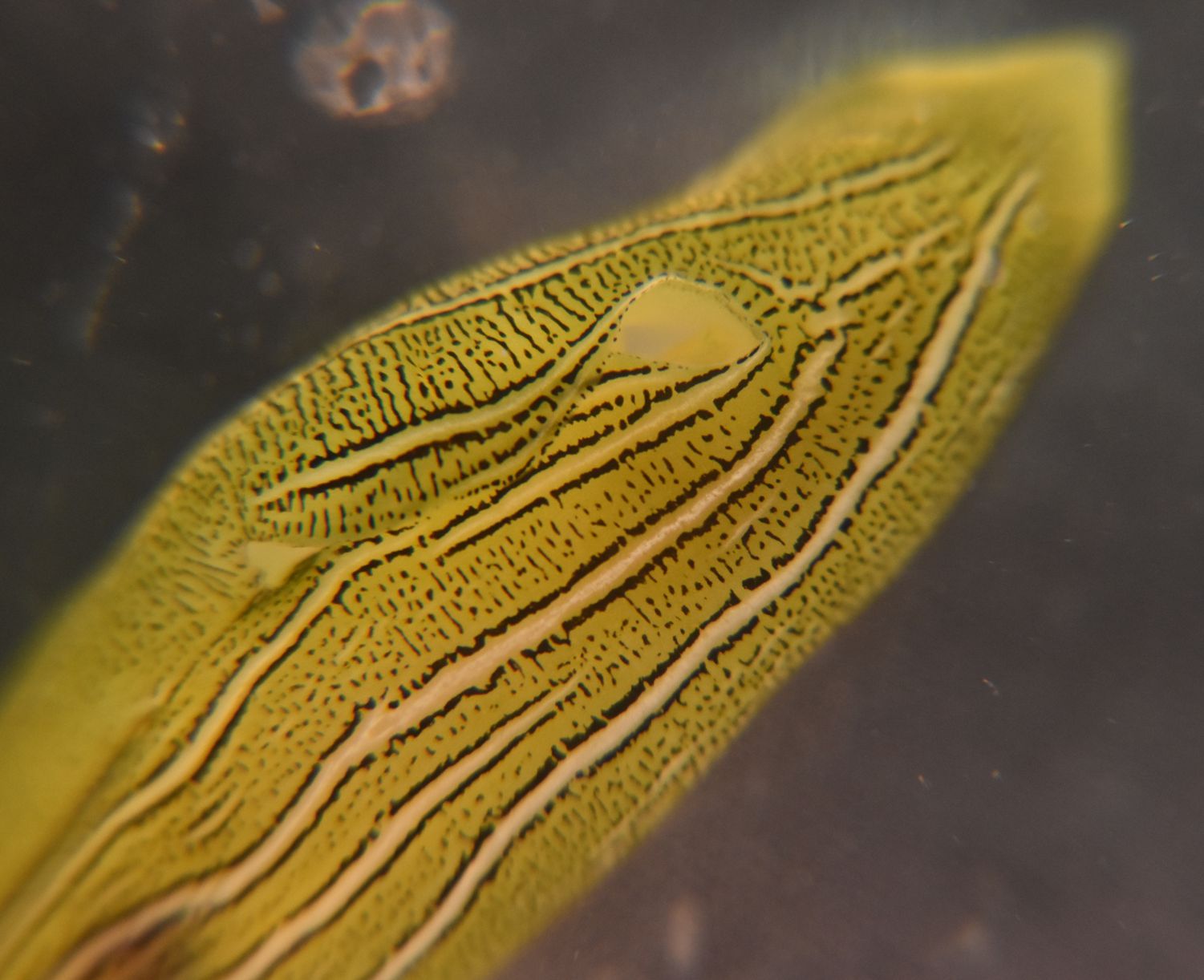|
Description: This 'sea slug' looks like a striped nudibranch. However, it is not a nudibranch. As a member of Order Anaspidea or Aplysiomorpha (sea hares), they have no 'head shield' as do the Cephalaspideans, but they do have rhinophores as do the nudibranchs. Most have a small, flexible, proteinaceous internal shell (which nudibranchs do not have), and most also have longitudinal flaps ('parapodia') running along the dorsum in which the gills are hidden. This species has a body dorsoventrally flattened like most nudibranchs do. The dorsal parapodial flaps are not well developed, though the gill is found inside a dorsal flap to the right of the dorsal midline and about 2/3 of the way back on the body (photo). The foot is off-white (photo). The dorsum is greenish with longitudinal black and white longitudinal stripes and also smaller black stripes or rows of black dots that are oriented laterally. Sometimes the animal's small, clear, flat shell can be seen on the dorsum just above the gill slit. Length up to 8 cm, but more commonly about 4.5 cm. How to Distinguish from Similar Species: This is a distinctive species found in eelgrass. At first glance it may appear like the nudibranch Armina californica, but A. californica has gills under the dorsum on both sides of the body instead of in a dorsal slit, and the longitudinal stripes are raised ridges. The other sea hares on the Pacific Coast of North America (Aplysia spp) live farther south in California, are larger, are laterally compressed instead of dorsoventrally flattened, have much better-developed parapodial flaps on the dorsum, and have an entirely different color pattern. Geographical Range: Vancouver Island, Canada to Baha California, Mexico Depth Range: Low intertidal to subtidal in eelgrass Habitat: Eelgrass Zostera marina Biology/Natural History: This species specializes in living on Zostera marina eelgrass, where it is often found wedged between blades near the bottom of the blades. It feeds on diatoms and other organisms growing on the eelgrass. Although its longitudinal stripes make it look distinctive, it often aligns itself with the eelgrass blade and blends in quite well. The eggs are attached in rectangular packets to the eelgrass in the summer. It has no pelagic larval stage--it hatches as a crawling juvenile. The lifespan is said to be as short as 3-8 months. This species is a hermaphrodite,
as is characteristic of opisthobranchs. It has only one gonopore
and seems to engage in simultaneous internal fertilization and
egglaying.
This means that the gonopore
may simultaneously contain its own sperm which are being ejected into
its
copulating partner, the sperm being received from its partner, and a
string
of eggs which are being laid.
References:Dichotomous Keys:Carlton, 2007 Kozloff, 1987, 1996 General References:
Scientific Articles:
Web sites: General Notes and Observations: Locations, abundances, unusual behaviors:
Authors and Editors
of Page:
Salish Sea Invertebrates web site provided courtesy of Walla
Walla University
|
||||||||




